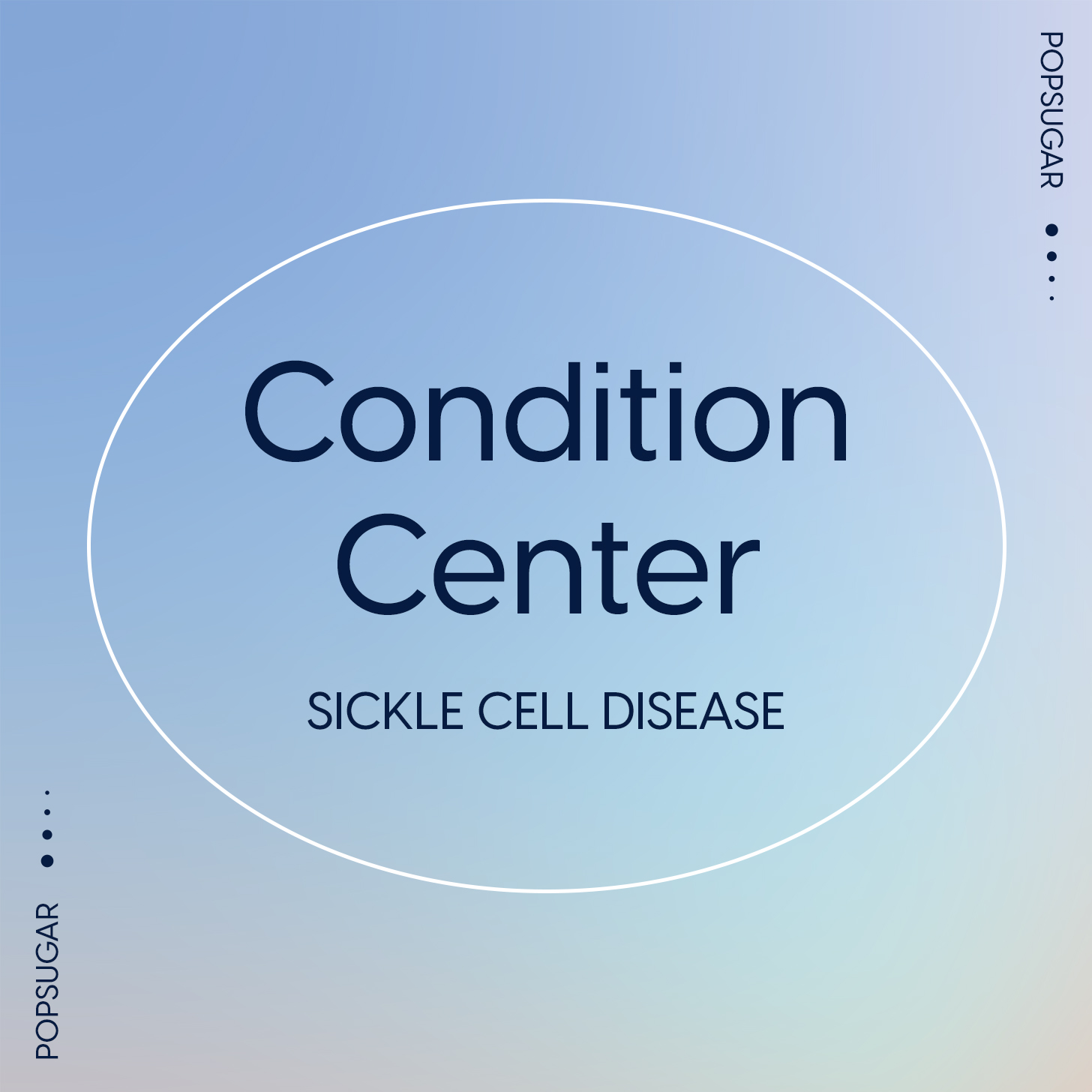
- POPSUGAR Australia
- Fitness
- Condition Center: Sickle Cell Disease
Condition Center: Sickle Cell Disease

This informational guide, part of POPSUGAR’s Condition Center, lays out the realities of this health concern: what it is, what it can look like, and strategies that medical experts say are proven to help. You should always consult your doctor regarding matters pertaining to your health and before starting any course of medical treatment.
Sickle cell disease is a lifelong illness that can cause intense pain episodes in patients. The condition impacts more than 100,000 people in the U.S., and largely affects people who have African ancestry or are Black, according to the National Heart, Lung and Blood Institute (NHLBI).
Currently, about one out of every 365 Black or African American babies in the U.S. are born with sickle cell disease, per the NHLBI, making this an important condition to be aware of. Sickle cell disease isn’t as talked about as other serious health conditions which is why learning about the signs and symptoms is so crucial. Here’s what you need to know about what sickle cell disease is, its symptoms, and treatment.
Understanding Sickle Cell Disease
Sickle cell disease is a group of inherited red blood cell disorders that impact hemoglobin, the protein that carries oxygen through the body, the NHLBI explains. “Hemoglobin is packaged into red blood cells-it doesn’t usually circulate freely in the blood,” says Gary Schiller, MD, a hematologist at UCLA Health.
Red blood cells are usually shaped like discs and are flexible enough to move through blood vessels, Dr. Schiller says. But with sickle cell disease, those red blood cells are shaped like a sickle, crescent, or banana due to a genetic mutation. That can block blood flow to the rest of the body and cause pain.
“I use the traffic jam analogy,” says Richard Drachtman, MD, director of the Pediatric Comprehensive Sickle Cell Center at Rutgers Robert Wood Johnson Medical School. “With sickle cell disease, your red blood cells are all stuck in a traffic jam and nothing can get around them. As a result, they have trouble navigating the bloodstream.”
Sickle Cell Disease Symptoms
People with sickle cell disease are born with the condition. However, symptoms don’t usually show up until they’re five or six months old, the NHLBI says. Those can include:
- Jaundice of the skin or whites of the eyes
- Extreme fatigue or fussiness
- Swelling in the hands and feet
People with sickle cell disease can also experience complications of the condition, according to the Centers for Disease Control and Prevention (CDC). Those can include:
- Acute chest syndrome (a life-threatening complication that can lead to lung injury and trouble breathing)
- Anemia
- Death of bone tissue
- Blood clots
- Hand-foot syndrome
- Fever
- Infection
- Kidney problems
- Liver issues
- Leg ulcers
- Organ damage
- Pain
- Painful erections
- High blood pressure in the lungs
- Sleep-disordered breathing
- Splenic sequestration (when sickled red blood cells get trapped in the spleen and block blood flow)
- Stroke
- Vision loss
“People with sickle cell disease feel like they’re not getting oxygen to their muscles,” Dr. Schiller says. These pain episodes can be severe and debilitating, as the “sickle-shaped red blood cells block blood flow through tiny blood vessels to the chest, abdomen and joints,” per the Mayo Clinic. The episodes are often referred to as pain crises, which can vary in intensity, lasting a few hours or few days. Some pain crises will require a hospital stay.
Patients with sickle cell disease also usually have chronic fatigue and trouble tolerating temperature changes, says Jennifer Abeles, DO, assistant clinical professor of Internal Medicine and Pediatrics at the Jacobs School of Medicine and Biomedical Sciences at the University at Buffalo.
Causes of Sickle Cell Disease
Sickle cell disease is a genetic condition, meaning you’re born with it, Dr. Abeles says. “You can only develop sickle cell disease if both of your parents have a sickle cell trait,” she says. While there are several different types of sickle cell disease, the type you have depends on the trait that your parents carry, Abeles explains.
Best Treatment Options For Sickle Cell Disease
Treatment for sickle cell disease has improved over the last few years. “Up until recently, the right treatment for patients has only been fluid hydration and oxygen,” Dr. Schiller says. “Now, we have a lot more opportunities for treatment.”
Those include hydroxyurea, an oral medication that reduces or prevents several complications of sickle cell disease; Crizanlizumab-tmca, an intravenous medication that helps keep blood cells from sticking to blood walls and lowers the risk of inflammation; and the oral medication voxelotor, which keeps red blood cells from forming a sickle shape and getting stuck together, Schiller says.
However, sickle cell disease can only be cured with a bone marrow transplant, the NHLBI says. “Treatment in 2023 is very different than it was not that long ago,” Dr. Drachtman says. “People with sickle cell disease used to have a terrible quality of life. Things have changed drastically.”
Dr. Drachtman emphasizes that patients with sickle cell disease in treatment will have “aches and pains,” but stresses that they don’t typically happen on a daily basis. “The average patient with sickle cell disease is doing much better than they have in the past,” he says.

